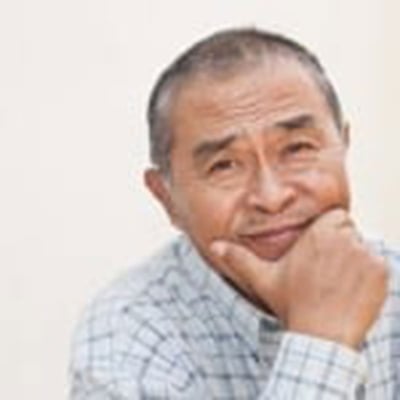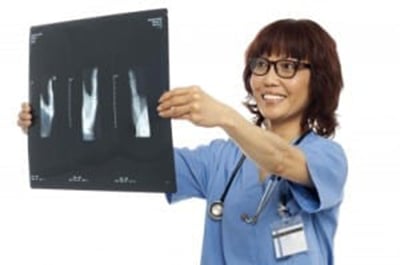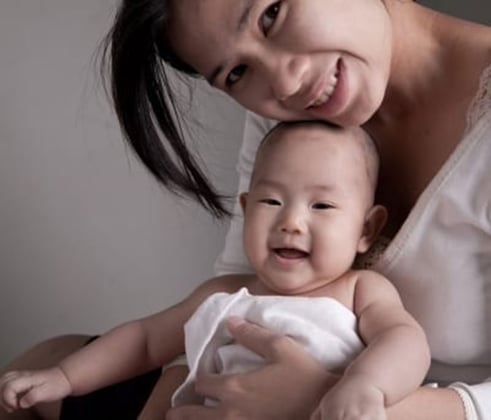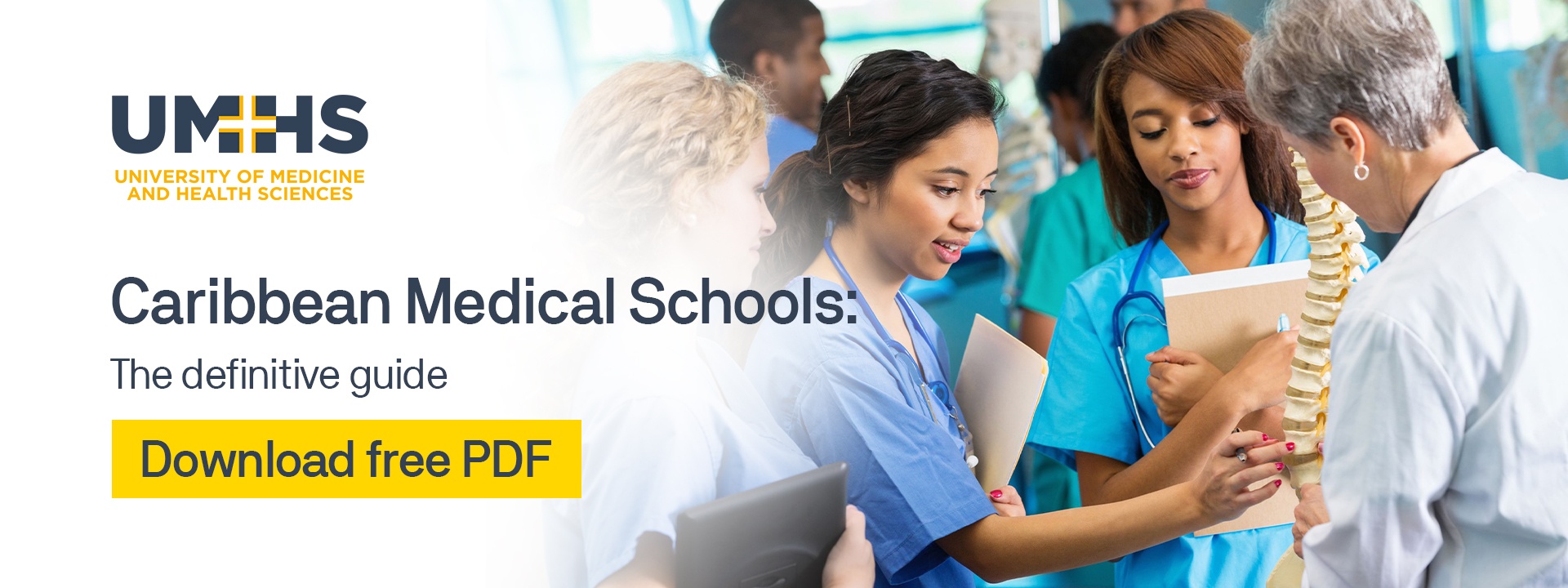Asian Americans have unique health concerns that the U.S. government is addressing as part of the Affordable Care Act (the ACA/Obamacare), including higher rates of liver and stomach cancer, tuberculosis, diabetes, hepatitis B and osteoporosis. Lactose intolerance and nasopharyngeal carcinoma are also more prevalent. According to the Asian American Health Initiative’s website, Asians are less likely to seek out cancer screening than other Americans.
In our third installment of the “Doctors and Diversity” series, the UMHS Endeavour looks at ways the medical community can serve this important population, from working with language barriers to understanding the cultural differences between Eastern and Western medicine to proper, sensitive treatment protocol.
Asian Americans & Pacific Islanders
The term Asian American covers a vast range of people. The U.S. Centers for Disease Control and Prevention (CDC) website says Asians include “people having origins in any of the original peoples of the Far East, Southeast Asia, or the Indian subcontinent including, for example, Cambodia, China, India, Japan, Korea, Malaysia, Pakistan, the Philippine Islands, Thailand, and Vietnam.”
Ethnic natives of Hawaii, Guam and U.S. territories in the Pacific are considered Pacific Islanders, part of the Asian American/Pacific Islander demographic, as are Fijians, Northern Mariana Islanders, Palauans, Tahitians and Tongans.
Language Barriers & Cultural Differences
 A multitude of different languages sets Asian Americans apart from other groups. As the Women’s Health website, part of the government agency Health and Human Services, explains, “Language barriers can interfere with receiving quality health care. About one-third of Asian-Americans do not speak English very well. Some do not speak any English. Many Asian-Americans may not know about the risk factors for disease or the role of preventive health care. Cultural beliefs about health and illness often conflict with Western medicine, which keep some Asian-Americans from seeking help for symptoms or sticking with treatment. Those living in poverty or uninsured may have limited access to health care.”
A multitude of different languages sets Asian Americans apart from other groups. As the Women’s Health website, part of the government agency Health and Human Services, explains, “Language barriers can interfere with receiving quality health care. About one-third of Asian-Americans do not speak English very well. Some do not speak any English. Many Asian-Americans may not know about the risk factors for disease or the role of preventive health care. Cultural beliefs about health and illness often conflict with Western medicine, which keep some Asian-Americans from seeking help for symptoms or sticking with treatment. Those living in poverty or uninsured may have limited access to health care.”
(Photo, inset right above) CULTURAL DIFFERENCES: Asian families may value group consensus on health care matters more than others. Photo: FreeDigitalPhotos.net
ResearchGate.net has a comprehensive guide from the Cleveland Clinic, “Cultural and Clinical Issues in the Care of Asian Patients” that addresses how healthcare providers can deal with Asian-American language barriers. Authors Xian Wen Jin, MD, PhD, Jacquelyn Slomka, PhD, RN, and Carol E. Blixen, PhD, RN say that many U.S. physicians may not be sufficiently fluent enough in Asian languages to treat Asian Americans who speak little or no English.
Using interpreters can be problematic due to privacy issues and laws in medicine, but there are positive sides. “Good interpreter services are possible despite these problems,” the authors say. “Interpreters can be hired locally, as the Asian community generally consists of persons with a spectrum of language skills. Physicians and nurses who are fluent in an Asian language also generally make excellent interpreters because of their familiarity with the language and with the cultural dimensions of the patient’s illness.”
Two things that may help doctors overcome language barriers include:
- Bilingual signs can be very effective in helping patients making appointments, filling prescriptions, and obtaining laboratory tests.
- A bilingual list of common phrases, medical terms, and questions is helpful to both staff and patients.
Treating Asian-American Patients
Marcia Carteret, M.Ed., writes on the Dimensions of Culture website about the many things doctors should consider when treating Asians.
For cultural reasons, some Asian-American patients consult their families about health care decisions. “Asian families may value group consensus on healthcare matters much more so than American families do,” she says. “Naturally, this can delay important medical decisions because extended family consultation can be time consuming. However, building trust with Asian families often depends on showing awareness of how important reaching consensus is among people from many non-American cultures.”
Ms. Carteret says doctors treating Asian American patients and families should establish the professional’s role and assume authority, but need to make sure patients and their families understand, be patient, give clear details about what is expected, pay attention to nonverbal clues, address immediate needs and give sound advice, and reach consensus by compromising.
“Checking for understanding when communicating with Asian patients/families is critical,” Ms. Carteret says. “It is all too easy to misinterpret a common gesture as agreement or understanding when the patient is actually confused or even resistant to a diagnosis/treatment. Avoiding the use of yes/no questions is very important.”
Discover if a Caribbean Medical School is right for you.
Learn about the most popular alternative path to becoming a doctor.
Other Cultural & Clinical Issues
 The Cleveland Clinic’s “Cultural and Clinical Issues in the Care of Asian Patients” includes useful guidelines doctors should consider when treating Asian Americans:
The Cleveland Clinic’s “Cultural and Clinical Issues in the Care of Asian Patients” includes useful guidelines doctors should consider when treating Asian Americans:
- In traditional Chinese culture, if a person feels well, there is no need to see a doctor. Also, because blood is considered as nonrenewable vital energy, patients may resist having blood tests to check such things as cholesterol and glucose.
(Photo, inset right above) EASTERN VS. WESTERN MEDICINE: Some Asian patients resort to Western medicine only if traditional healing (i.e., use of Asian herbs) fails. Photo: FreeDigitalPhotos.net
- Toxicity or side effects of ginseng such as central nervous system stimulation and increased blood pressure have been reported. Excessive amounts of ginseng may cause headache, insomnia, and palpitations. Ginseng may decrease the diuretic effect of furosemide, causing an adverse reaction in patients with congestive heart failure.
- Physicians should ask patients about their use of traditional treatments and herbal medications while taking the history of the present illness. Some Asian patients resort to Western medicine only if traditional healing fails; others use both traditional and Western medicine, or only Western medicine.
The website for the Asian Pacific American Medical Student Association at Stanford University School of Medicine says “many Asians have reduced abilities to metabolize pharmacological agents (e.g. proton pump inhibitors, nicotine, Valium, TCA) as compared to members of other races.”
Treating Diseases
 “Cultural and Clinical Issues in the Care of Asian Patients” offers pragmatic advice for treating the diseases that are more prevalent amongst Asian Americans. The following are the authors’ thoughts and findings for treating diseases in Asian Americans:
“Cultural and Clinical Issues in the Care of Asian Patients” offers pragmatic advice for treating the diseases that are more prevalent amongst Asian Americans. The following are the authors’ thoughts and findings for treating diseases in Asian Americans:
Lactose intolerance: Found in as many as 75% to 100% of Chinese, Japanese and Korean people.
(Photo, inset right above) OSTEOPOROSIS RISKS: Asian American women have a high risk of osteoporosis because of lower bone mass and density, smaller body frames & other factors. Photo: FreeDigitalPhotos.net
Treatment considerations: On the basis of a careful history that rules out other common diseases, a lactose-free diet could be tried before starting an extensive diagnostic workup for many Asian patients who have watery diarrhea.
Hepatitis B: More common in Asians than in the general US population, occurring in about 8% to 22% of Asians vs. only 0.2% to 0.9% in the US population. Consequently, primary hepatocellular cancer among Asians is not as rare as in the US general population.
Treatment considerations: In evaluating an Asian patient with a hepatic lesion or new onset of cirrhosis, an alpha-fetoprotein measurement and magnetic resonance imaging scan of the liver should be included.
Nasopharyngeal carcinoma: Rare in the general population but remarkably common in Cantonese Chinese patients, presumably because of a high incidence of Epstein-Barr virus infection in the region.
Treatment considerations: An otolaryngology referral for a Chinese patient with epistaxis or cervical adenopathy is essential to rule out a nasopharyngeal lesion.
Tuberculosis: More common in Asian Americans than in other ethnic groups. Most cases in foreign-born Asians develop within the first 2 years after arrival in the United States. Many countries in Asia still use bacilli Calmette-Guérin (BCG) vaccination as part of their tuberculosis control program, especially for infants. This vaccine was initially derived from a strain of Mycobacterium bovis and was attenuated through years of serial passage in culture. BCG immunization may cause a positive reaction to the tuberculin skin test. This phenomenon complicates clinical decision-making about prophylactic therapy for BCG-vaccinated Asian patients who have a positive skin test result. There is no reliable method of distinguishing tuberculin reactions caused by BCG from those caused by natural infection. According to the CDC, a positive reaction to tuberculin skin testing in a person with a history of BCG vaccination is more likely due to tuberculosis infection if any of the following are true: The induration is large; the person was vaccinated a long time ago; the person recently came into contact with a person with tuberculosis; there is a family history of tuberculosis; the person comes from an area where tuberculosis is common; chest x-ray findings show evidence of previous tuberculosis.
Treatment considerations: An Asian immigrant who comes from a country where tuberculosis is common and who has a positive PPD (purified protein derivative) skin test should definitely have a chest roentgenogram done to rule out active pulmonary tuberculosis infection. The patient should then be evaluated for isoniazid preventive therapy after active disease has been ruled out.
Sensitivity to beta-blockers: Chinese patients may have increased sensitivity to beta-blockers.
Treatment considerations: In clinical practice, these patients may require only a very low dosage of a beta-blocker to treat hypertension while avoiding side effects such as bradycardia, bronchoconstriction, and sexual dysfunction.
Mental health problems may be masked: Mental health problems among Asian patients may be masked by a negative cultural attitude that prevents many Asians from seeking professional care. The nature of these problems in Asian immigrants is strongly affected by several factors, including the circumstances that motivated them to leave their countries, the expectation for starting a new life in the United States, and the adjustment experience they have had here. Refugees forced to leave their native country because of war or political persecution may bring with them memories of torture and atrocities, and may suffer post-traumatic stress disorder and intrusive, frightening thoughts. Sleep disturbances, therefore, are common. These patients are relatively easy to identify and treat for their psychological disorders.
Treatment considerations: The primary care physician, in assessing for psychological disorders, should inquire about the circumstances surrounding the patient’s decision to come to the United States, with the understanding that it may be difficult or impossible for the person to recall painful memories.
Depression may be difficult to recognize: In contrast to other psychological factors mentioned above, major depression in immigrants facing culture shock, separation from family, language barriers, and unsatisfactory employment is much more difficult to recognize. This immigrant group tends to
include professionals with fewer language barriers and higher education levels, who are usually perceived as successful by the wider society.
Treatment considerations: Frequently, these patients present to primary care settings with multiple physical complaints. Multiple visits may be required to establish the diagnosis of depression and involve the patient in a treatment alliance.
Osteoporosis: WomensHealth.Gov says, “Asian-American women have a high risk of osteoporosis because of their lower bone mass and density. They also have smaller body frames. And, they tend to consume less calcium compared to other groups of women. As many as 9 in 10 Asian-American women have trouble digesting milk products. This is called lactose intolerance. This limits the ability to get calcium from food.”
Prevention considerations: WomensHealth.Gov says Asian-American women who are lactose intolerant should eat small amounts of dairy daily, or take a calcium and vitamin D supplement. Smoking also increases risk of osteoporosis, so doctors should urge women who smoke to go on a smoking-cessation program. Alcohol intake should be limited. Aerobic exercise can help strengthen bones. Women age 65 and over should have a bone-density test.
Avoiding Stereotyping Asian-American Patients
Avoiding stereotyping patients is key to treating the Asian-American population. The Cleveland Clinic’s “Cultural and Clinical Issues in the Care of Asian Patients” gives final tips for serving the health care needs of Asian Americans:
- Do not make assumptions about the patient’s ethnic heritage and level of acculturation. When in doubt, ask the patient about his or her comfort with a particular plan.
- Acknowledge differences in culture. Recall that biomedicine is also a “culture,” with its own premises that may not be congruent with those of the patient.
- Use a translator when possible if language difficulties exist.
- Take a careful history, which should include the patient’s social situation and history, use of herbal medicines, use of alternative therapies, and how health care decisions are made in the family. Take care to assess stressors the patient may be experiencing at home or at work.
- Learn about your patient’s culture through library research, just as you might research an unfamiliar medical issue. Do so with the understanding that your patient may or may not fit the generalities.
(Top photo) KEEPING ASIAN AMERICANS HEALTHY: Lactose intolerance, hepatitis B, osteoporosis & fear of cancer screenings are all medical issues facing Asian Americans. Photo: FreeDigitalPhotos.net
About UMHS:
Built in the tradition of the best US universities, the University of Medicine and Health Sciencesfocuses on individual student attention, maintaining small class sizes and recruiting high-quality faculty. We call this unique approach, “personalized medical education,” and it’s what has led to our unprecedented 96% student retention rate, and outstanding residency placements across the US and Canada. UMHS is challenging everything you thought you knew about Caribbean medical schools.

Scott is Director of Digital Content & Alumni Communications Liaison at UMHS and editor of the UMHS Endeavour blog. When he's not writing about UMHS students, faculty, events, public health, alumni and UMHS research, he writes and edits Broadway theater reviews for a website he publishes in New York City, StageZine.com.


















